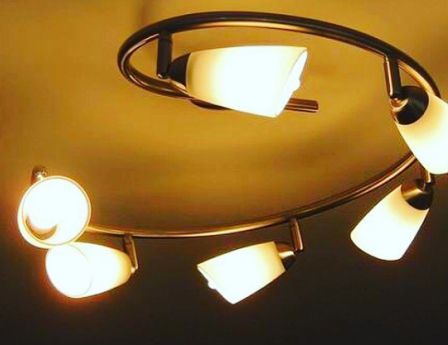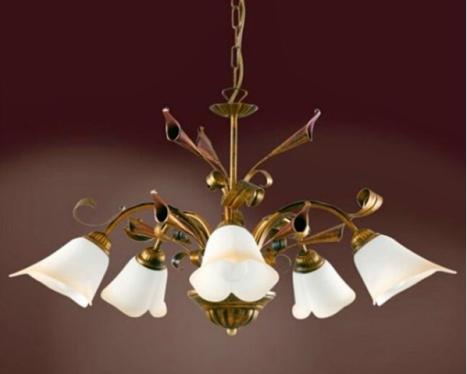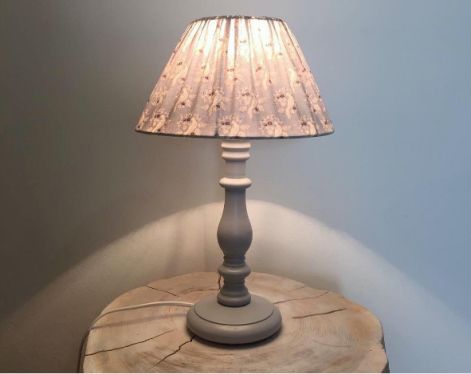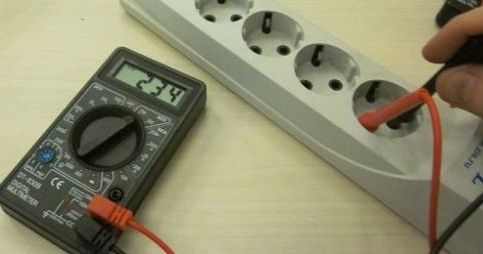Categories: Featured Articles » Sources of light
Number of views: 79356
Comments on the article: 0
What to do if the light blinks
Often in everyday life a situation arises when the voltage in the network is unstable, or, as they say in common parlance, the light blinks. This phenomenon not only causes discomfort, but can also lead to the failure of home electrical appliances, especially those that are sensitive to voltage surges. Therefore, it is very important in a short time to find the cause of this negative phenomenon and eliminate it. In this article, we will try to understand why the light blinks, and we will present the appropriate solutions to this problem.

Poor power supply or lamp malfunction?
One of the most common reasons that light may blink is poor power supply. In this case, we are talking about an unstable voltage, the value of which changes stepwise. But also do not forget that the reason why the light may blink can also be a malfunction of a lamp or other household appliance that worked in a mode uncharacteristic for normal operation. So, how to determine why the light is blinking?
Consider the most common situation when a room lighting lamp blinks. If the light in the room begins to blink, then you immediately need to check how other lamps work. The unstable operation of other lamps, as well as the characteristic signs of the abnormal operation of household electrical appliances indicate that there are voltage surges in the mains.
Power surges can be short-term and not cause harm to household appliances, but it is also possible that voltage surges can end with a sharp power surge in case of further development of an emergency in electric networks. In this case, in order to avoid damage to electrical appliances, it is necessary to immediately disconnect from the network all household electrical appliances by disconnecting the electrical wiring.
An example is the situation when on one of the supports of an overhead power line the integrity of the neutral conductor is violated. As long as the contact does not completely disappear, power surges are observed in the network, but after a complete break of the neutral wire in the network, a voltage imbalance occurs, since the phase load is asymmetrical.
In this case, the larger the load difference, the greater the voltage difference for each phase. At the same time, some consumers will experience lower voltage, while others will be excessively high.
That is, if you do not de-energize your home wiring in time, then in the absence of surge protection, there is a high probability of damage to household electrical appliances that are currently included in the household network.
It should be noted that not only high voltage can be dangerous, but also very low, since a number of household appliances with excessively low voltage will also quickly fail.

Let's go back to the example with a blinking lamp in the room. If other lamps work normally, then the cause may be a malfunction of the lamp, lamp or wiring section supplying this lamp.
In this case, the contact of the lamp base with the contacts of the lamp holder may be broken. You can take another lamp previously checked in another lamp and try to put it in this lamp, where flickering was observed.
It should be noted that the lamp must be unscrewed after turning off the lamp and after it cools down, especially with regard to halogen lamps and incandescent lamps, which become very hot during operation.
If the problem is not solved by replacing the lamp, then this indicates that the old lamp that stood earlier was in good condition, that is, the reason for the blinking of light in this case is different.At this stage, for a person who does not have experience and relevant skills, further troubleshooting will not only bring no results, but can also lead to negative consequences - electric shock. To avoid negative consequences, it is better to contact an electrician for help.
A further search for the cause of the blinking of the lamp should be sought in the lamp. First of all, you need to check the location of the contact plates in the lamp holder, you can compare them with another holder in which the lamp works normally.
Often the cause of poor contact is the lack of elasticity of the contact plate or its displacement, which does not provide the proper stiffness of the contact of the lamp with the contact elements of the lamp holder.
If necessary, correct the contact plates, after making sure that there is no voltage on them. You should also pay attention to the condition of the contacting surfaces, clean the surfaces in case of oxidation, which is one of the causes of poor contact.
It is highly likely that a contact violation occurred in the luminaire itself: at the point of connection of the cartridge or the luminaire itself to the wiring line. If the lamp is designed for several lamps, then you should check the reliability of the contact at the branching point of the conductors on the lampholders.

Home Wiring Failure
If it turns out that the lamp is fully operational, there are no voltage drops in the electrical network, then it is possible that the light is blinking due to a malfunction in the home wiring.
If the luminaire is in good working order, the reason should be sought in the junction box in which the wiring line that supplies this luminaire is connected. If everything is normal in the junction box or if the lamp is connected directly from the junction box, check the reliability of contact connections directly in the junction box.
Rarely enough, but still there is a situation where the light flickers due to a violation of the integrity of the conductors of the wiring. This feature is characteristic of aluminum wires, since they are quite fragile and can break in a few bends. Most often, the wire breaks at the place where it is buried under a layer of plaster.
There are also cases when, during installation, the aluminum wire undergoes bends, but its core is not completely broken and works for some time, conducting current. But after some time, the light begins to blink due to a violation of contact in the place of a wire break.
In this case, the solution to the problem is to replace the wiring section where a wire break is detected. If it is not possible to completely replace the wiring line, it is better to use a reliable connector or a regular bolt with a nut, washers and grover, with which you can connect the conductor wires with subsequent insulation of the contact joints with several layers of insulation tape.
A partial replacement of the wire is undesirable, since the extended section of the aluminum wire will sooner or later make itself felt. The extension of the wire can be allowed if this wiring line feeds one lamp, the load of which is very small and there is confidence in the reliability of the made contact connection. If we are talking about several lamps or an outlet, then in this case there are no options - it is definitely necessary to completely change the wiring line.

Household appliance malfunction
As for the household electrical appliance, its unstable operation, blinking of the built-in lighting lamps may indicate its malfunction. Therefore, in the event of signs that are not characteristic of the normal operation of a household appliance, it is necessary to check the operation of other devices.
The normal operation of other electrical appliances, as well as the stable operation of the fixtures, indicates that the voltage in the network is normal and the cause is a malfunction of the household electrical appliance. In this case, you must immediately disconnect it from the power supply to find out the reasons for the malfunction.
Another possible reason for the malfunction of the electrical appliance, as in the case with the lamp described above, may be a failure in the contact connection in the outlet into which the electrical appliance is connected, a violation of the integrity of the wiring line, as well as a violation of the contact connections in the junction box or electrical switchboard.
Solving the problem of low-quality power supply
If the blinking of light occurs systematically, then it is necessary to solve the problem of poor-quality power supply. What to do in this case?
First of all, it should be noted that organizations providing power to household consumers must ensure reliable (in accordance with the category of reliability) and high-quality power supply. Under the quality of power supply is meant, first of all, maintaining the voltage of the household power supply network within acceptable values. For a household electrical network it’s range 210-230 V.

In the electric network, short-term voltage drops are possible, but if the voltage is constantly unstable, then this is unacceptable. Electricians (representatives of the energy supplying organization) must solve this problem, that is, ensure their responsibilities in accordance with the agreement on the provision of electricity supply services to consumers. Therefore, if there are problems with the power supply, in particular the presence of constant voltage drops, you must immediately contact the organization that provides power to the apartment or private house.
The problem of power surges in the electric network can be due to the operation by other consumers of electrical appliances that affect the electrical network. For example, a powerful welding machine, which constantly carries out repair work in the garage, various powerful electrical appliances that have structurally engines, when starting, reversing, switching various operating modes of which, voltage drops in the electric network are also possible. But in any case, to search for the preliminary cause of the voltage drops, you must contact the organization that maintains the electrical networks.
If the appeal did not help, then you will have to solve the problem with voltage drops on your own, since it can take a long time to solve the problem, and during this time electrical appliances can be damaged. It is also not very comfortable to be indoors if the light is blinking there.

If the voltage drops, its instability occurs quite often, then the problem can be solved by installing a voltage stabilizer. This device will filter the input voltage and the output will be a stable voltage of a given value. In this case, the lighting lamps will not flicker, and electrical appliances will be protected from voltage surges.
In the event that the blinking of light, that is, voltage drops in a household network, is not a frequent occurrence, then it makes no sense to install a voltage stabilizer at the input of the wiring. In this case, you can limit yourself to installing a voltage relay in the home switchboard. This device will protect household appliances from damage by de-energizing the wiring in case of unwanted power surges.
See also at bgv.electricianexp.com
:
